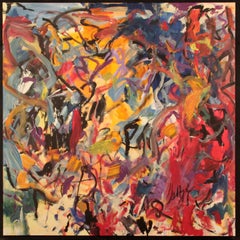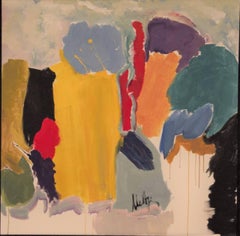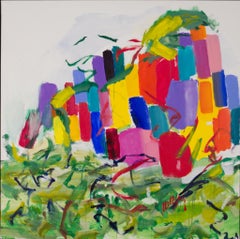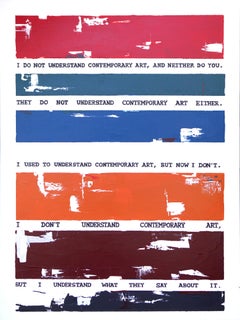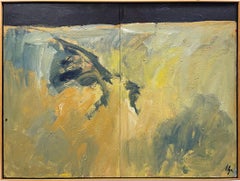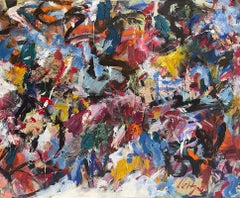Neltje Art
Neltje Doubleday Kings was born in New York City and raised in style on Long Island and a South Carolina plantation.
At the age of 32, as a single mother of two, Neltje moved from Park Avenue to a ranch in Wyoming in the shadows of the Big Horn Mountains. Since then she has become one of the West’s preeminent artists. Like the openness of the West, Neltje likes to do things on a big scale, and many of her paintings are 10 to 12 feet wide. She considers herself “an Abstract Expressionist painter.” Her works are in a wide range of museums and private collections, including the Smithsonian Institution, Yellowstone Art Museum, Buffalo Bill Center of the West and the IBM Corporation, along with solo exhibitions at the University of Wyoming and the University of Montana.
Find Neltje paintings and other art on 1stDibs.
2010s Contemporary Neltje Art
Canvas, Acrylic
2010s Contemporary Neltje Art
Canvas, Acrylic
2010s Contemporary Neltje Art
Canvas, Acrylic
2010s Abstract Neltje Art
Canvas, Acrylic
2010s Contemporary Neltje Art
Canvas, Acrylic
2010s Contemporary Neltje Art
Canvas, Mixed Media, Acrylic, Silk, Pigment
21st Century and Contemporary Abstract Neltje Art
Canvas, Acrylic
21st Century and Contemporary Contemporary Neltje Art
Canvas, Acrylic, Oil
Late 20th Century Abstract Neltje Art
Canvas, Acrylic
2010s Abstract Neltje Art
Canvas, Acrylic
21st Century and Contemporary Abstract Neltje Art
Canvas, Acrylic
21st Century and Contemporary Abstract Neltje Art
Canvas, Acrylic
21st Century and Contemporary Abstract Neltje Art
Canvas, Acrylic
21st Century and Contemporary Abstract Neltje Art
Canvas, Acrylic
21st Century and Contemporary Abstract Expressionist Neltje Art
Canvas, Acrylic
2010s Contemporary Neltje Art
Canvas, Acrylic
2010s Contemporary Neltje Art
Canvas, Spray Paint, Acrylic
Early 2000s Abstract Expressionist Neltje Art
Canvas, Acrylic
Early 2000s Abstract Expressionist Neltje Art
Canvas, Acrylic
Early 2000s Abstract Expressionist Neltje Art
Canvas, Acrylic
2010s Abstract Expressionist Neltje Art
Canvas, Acrylic
2010s Abstract Expressionist Neltje Art
Canvas, Acrylic
2010s Abstract Expressionist Neltje Art
Canvas, Acrylic
2010s Contemporary Neltje Art
Canvas, Acrylic Polymer, Acrylic
2010s Abstract Neltje Art
Canvas, Acrylic
2010s Contemporary Neltje Art
Monotype
2010s Abstract Neltje Art
Canvas, Acrylic
2010s Abstract Neltje Art
Canvas, Acrylic
2010s Abstract Neltje Art
Canvas, Acrylic
